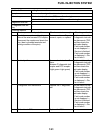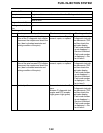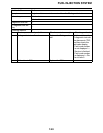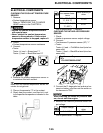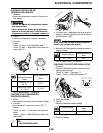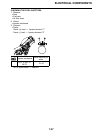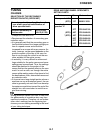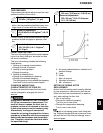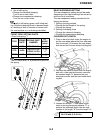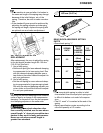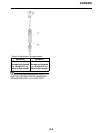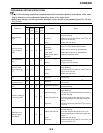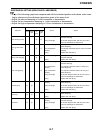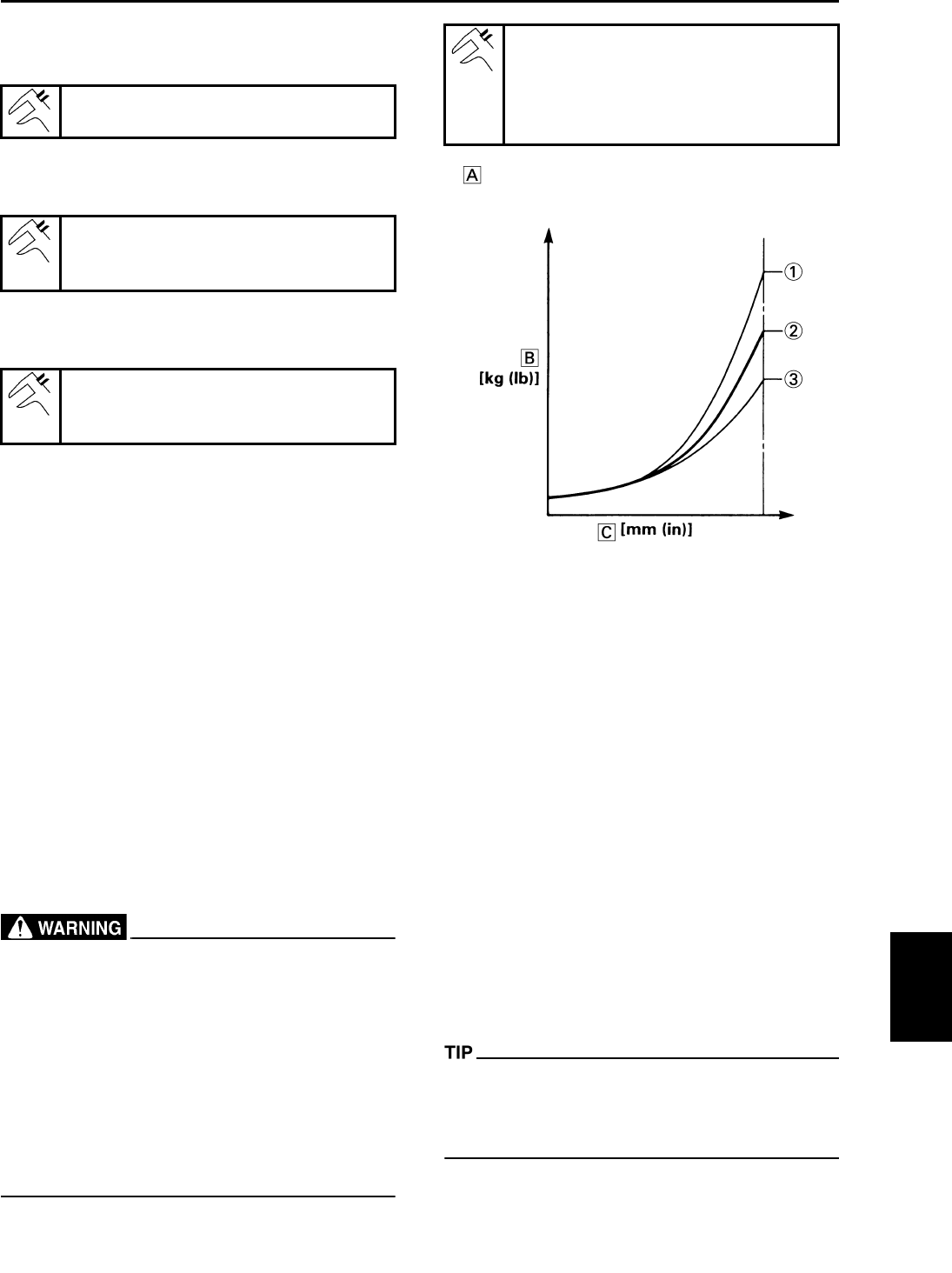
8-2
CHASSIS
TIRE PRESSURE
Tire pressure should be adjust to suit the road
surface condition of the circuit.
• Under a rainy, muddy, sandy, or slippery con-
dition, the tire pressure should be lower for a
larger area of contact with the road surface.
• Under a stony or hard road condition, the tire
pressure should be higher to prevent a flat
tire.
FRONT FORK SETTING
The front fork setting should be made depend-
ing on the rider's feeling of an actual run and
the circuit conditions.
The front fork setting includes the following
three factors:
1. Setting of air spring characteristics
• Change the fork oil amount.
2. Setting of spring preload
• Change the spring.
3. Setting of damping force
• Change the compression damping.
• Change the rebound damping.
The spring acts on the load and the damping
force acts on the cushion travel speed.
CHANGE IN AMOUNT AND
CHARACTERISTICS OF FORK OIL
Damping characteristic near the final stroke
can be changed by changing the fork oil
amount.
Adjust the oil amount in 5 cm
3
(0.2 Imp oz,
0.2 US oz) increments or decrements. Too
small oil amount causes the front fork to
produce a noise at full rebound or the rider
to feel some pressure on his hands or body.
Alternatively, too large oil amount will
cause the air spring characteristics to have
a tendency to be stiffer with the consequent
deteriorated performance and characteris-
tics. Therefore, adjust the front fork within
the specified range.
A. Air spring characteristics in relation to oil
amount change
B. Load
C. Stroke
1. Max. oil amount
2. Standard oil amount
3. Min. oil amount
SETTING OF SPRING AFTER
REPLACEMENT
As the front fork setting can be easily affected
by rear suspension, take care so that the ma-
chine front and rear are balanced (in position,
etc.) when setting the front fork.
1. Use of soft spring
• Change the rebound damping.
Turn out one or two clicks.
• Change the compression damping.
Turn in one or two clicks.
Generally a soft spring gives a soft riding feel-
ing. Rebound damping tends to become stron-
ger and the front fork may sink deeply over a
series of gaps.
Standard tire pressure:
100 kPa (1.0 kgf/cm
2
, 15 psi)
Extent of adjustment:
60–80 kPa (0.6–0.8 kgf/cm
2
, 9.0–12
psi)
Extent of adjustment:
100–120 kPa (1.0–1.2 kgf/cm
2
,
15–18 psi)
Standard oil amount:
355 cm
3
(12.5 Imp oz, 12.0 US oz)
Extent of adjustment:
300–365 cm
3
(10.6–12.8 Imp oz,
10.1–12.3 US oz)
8



